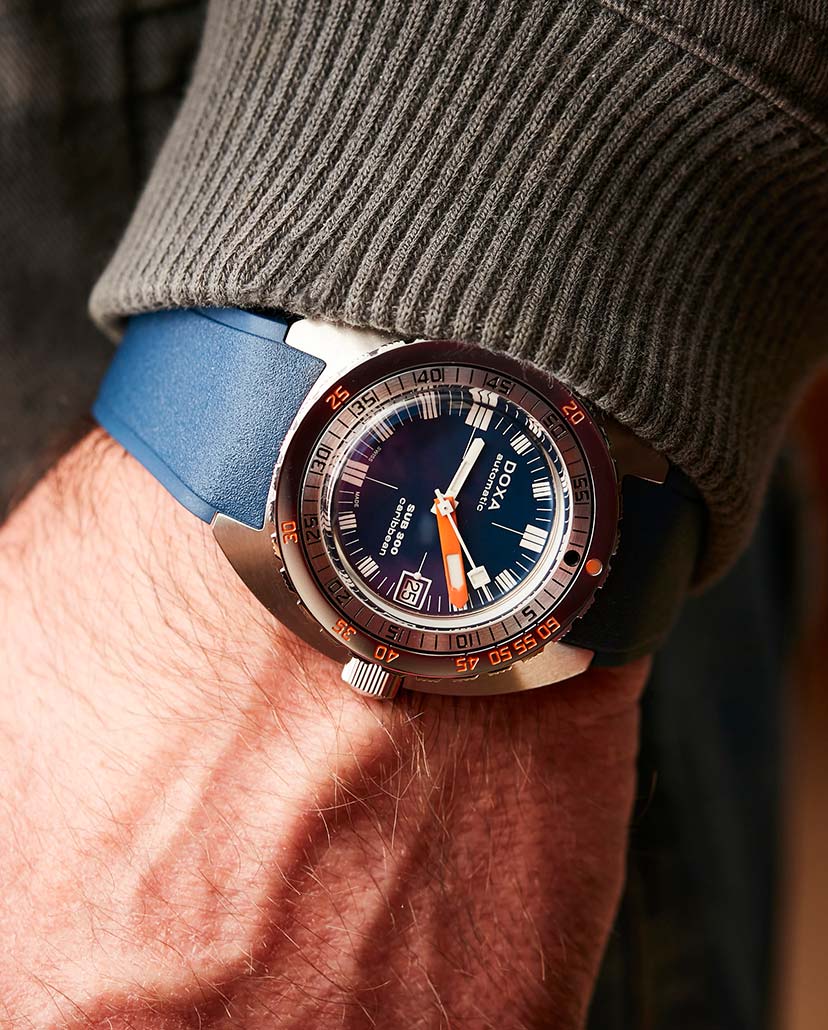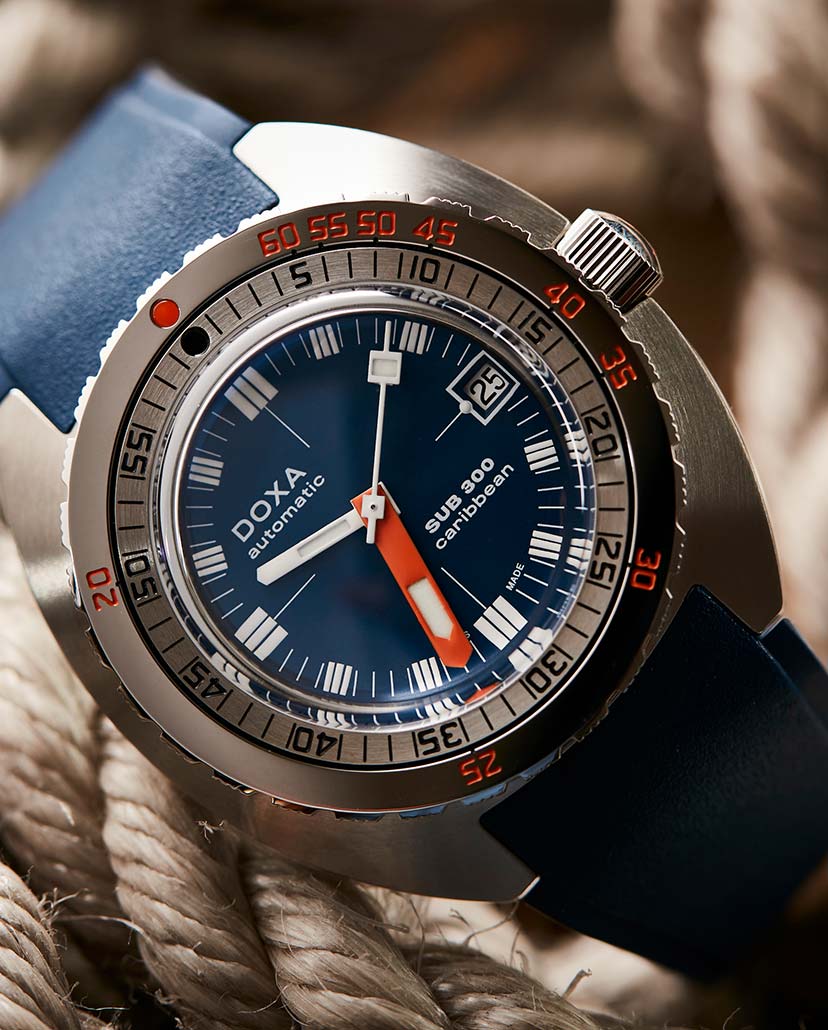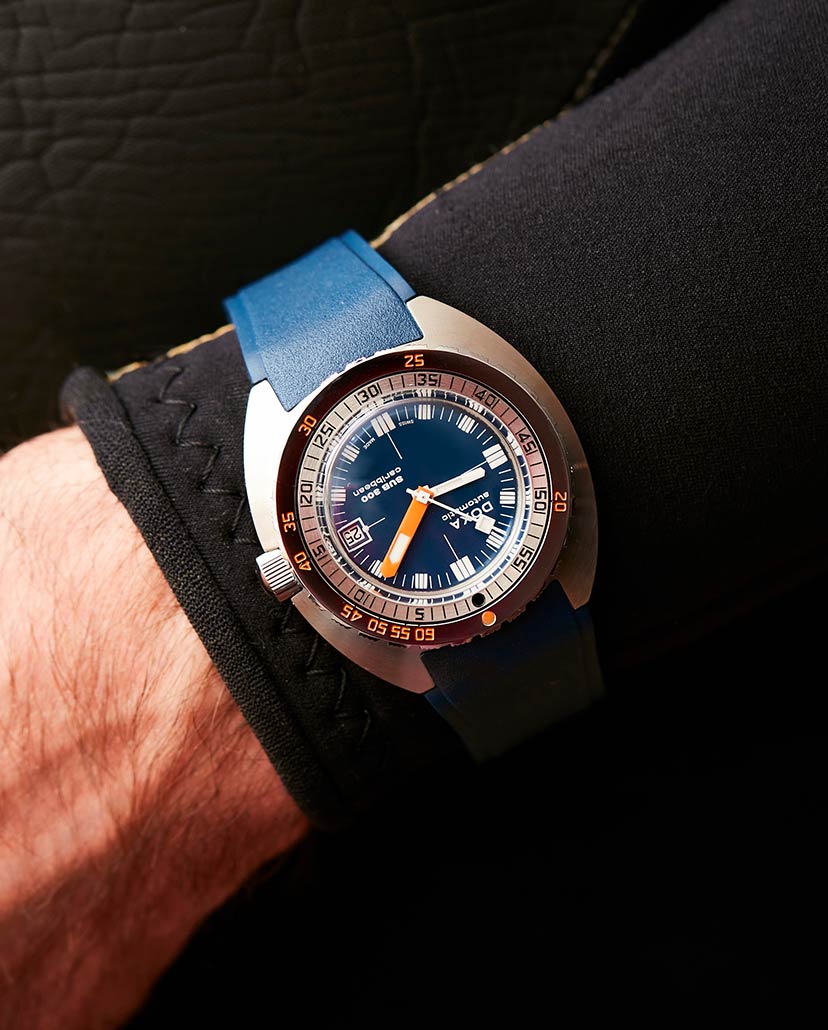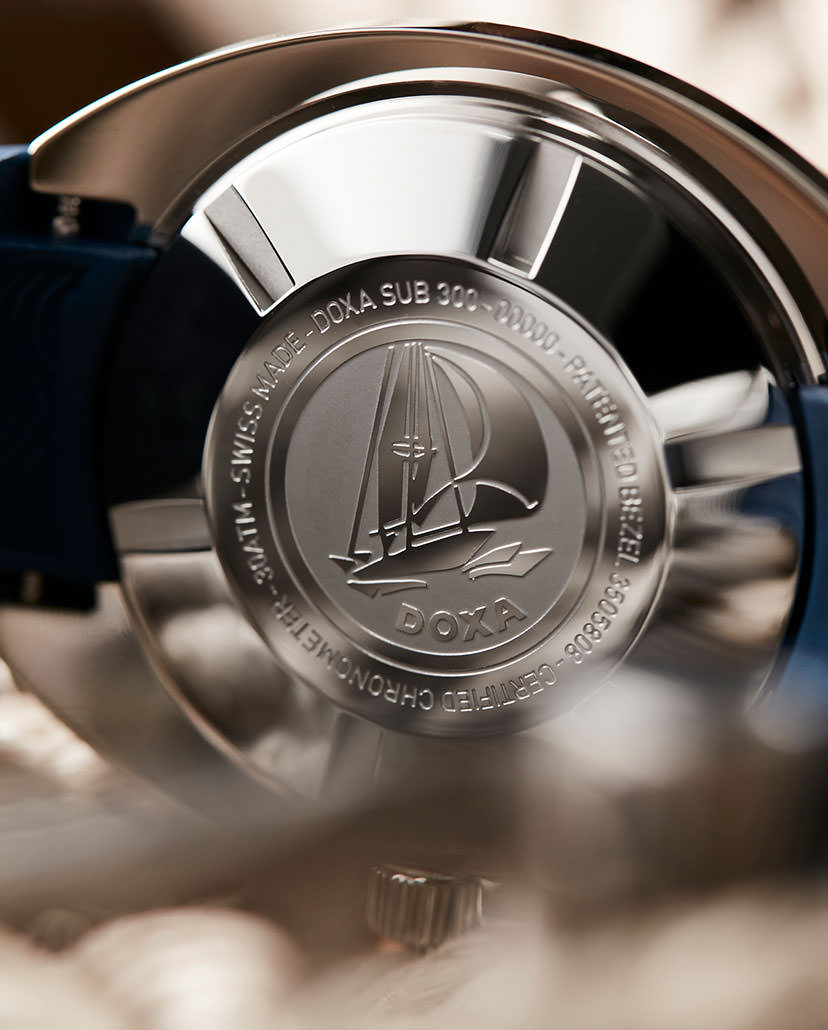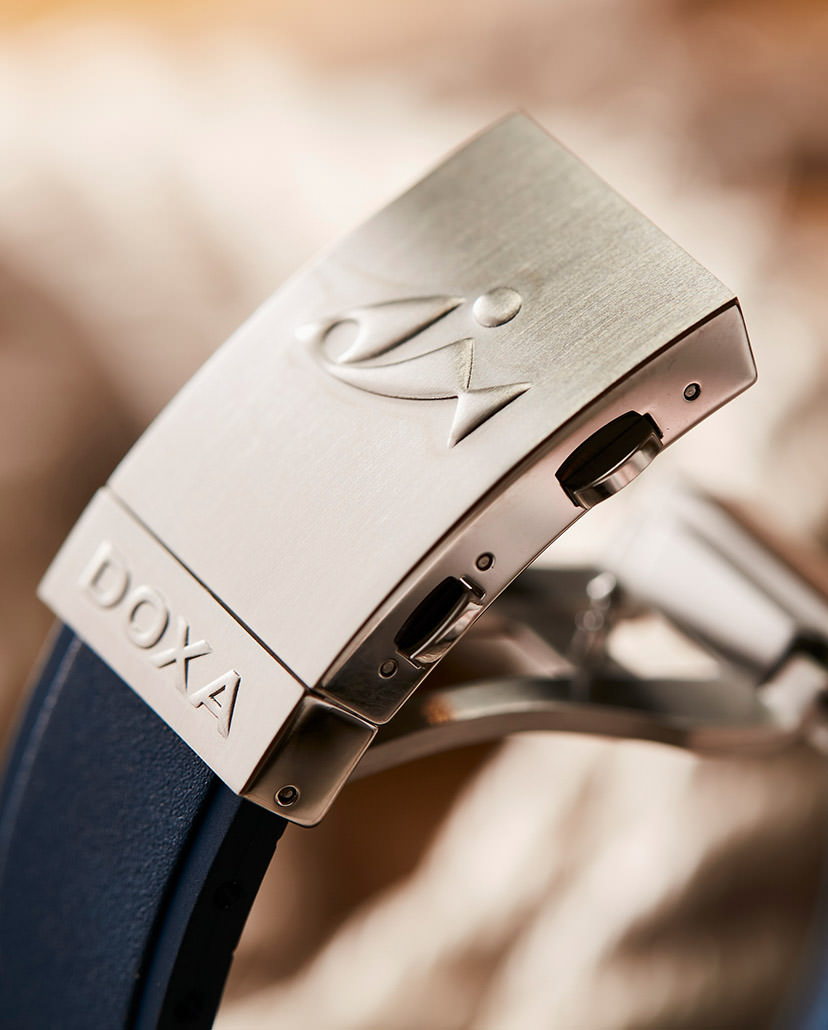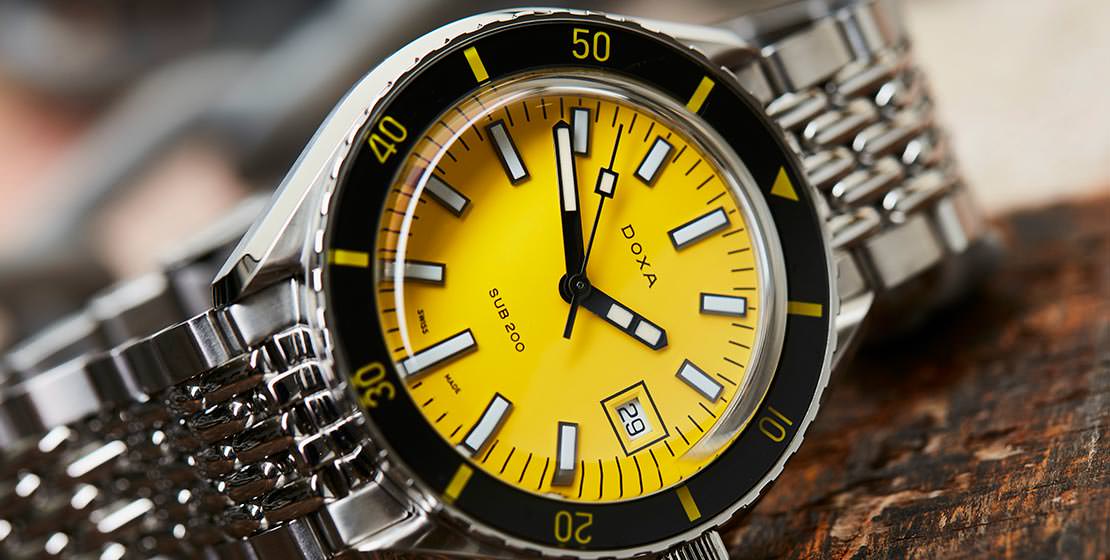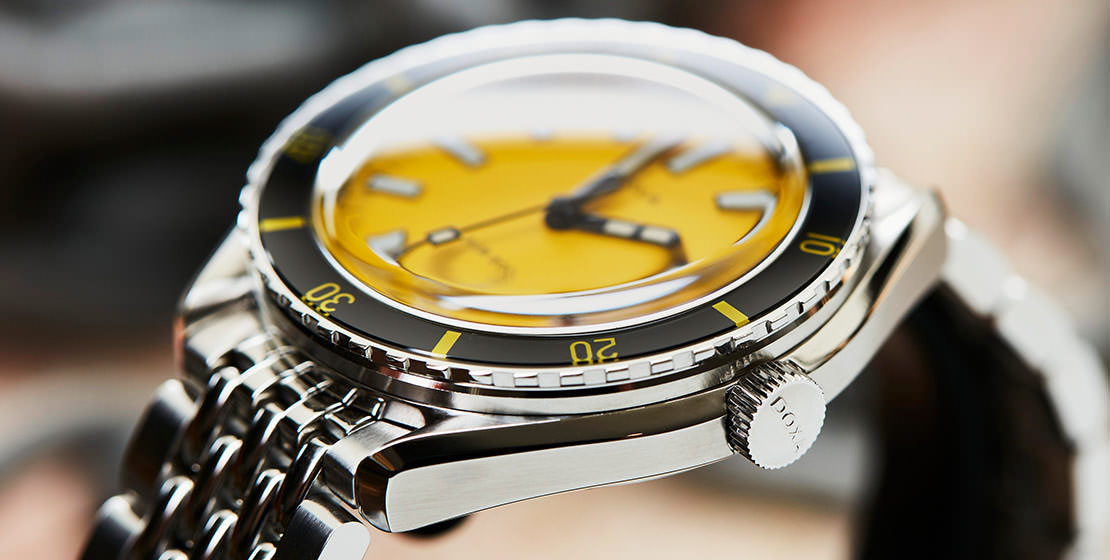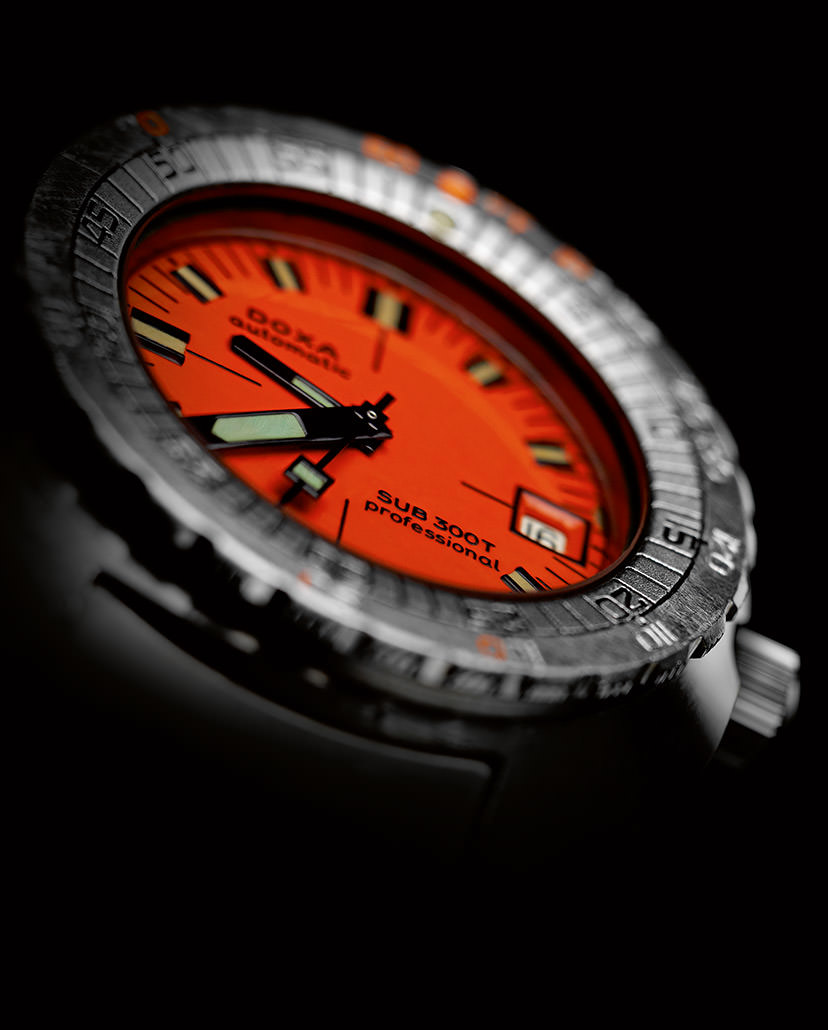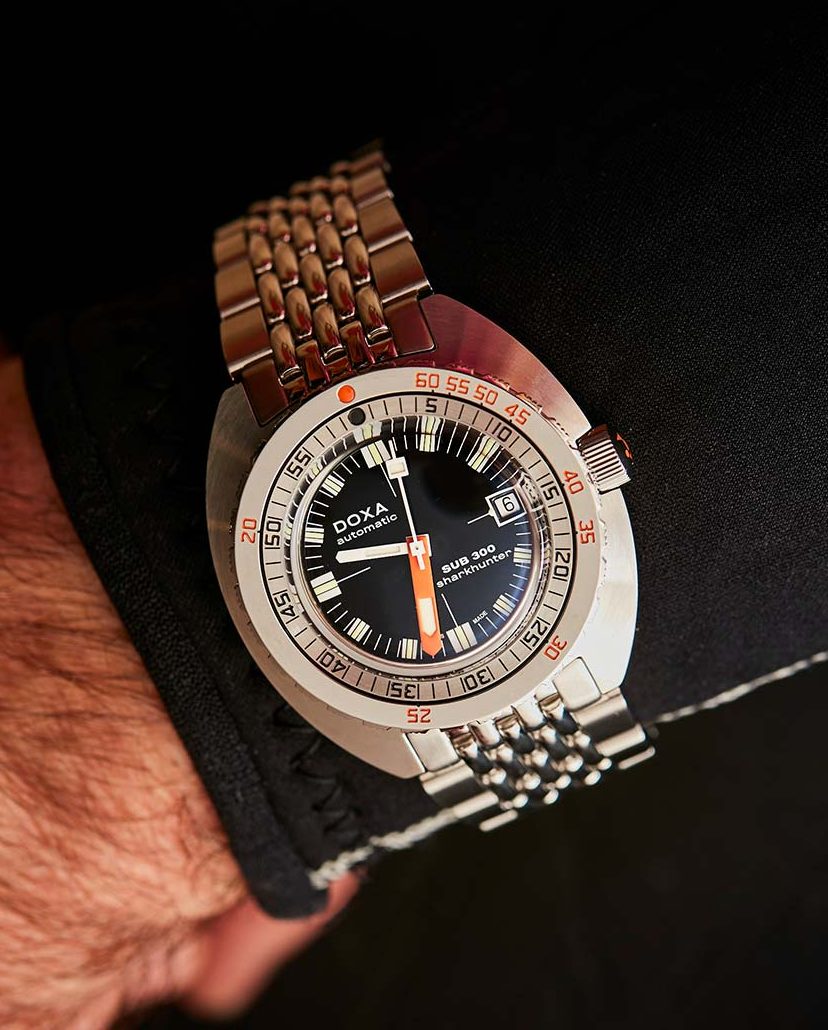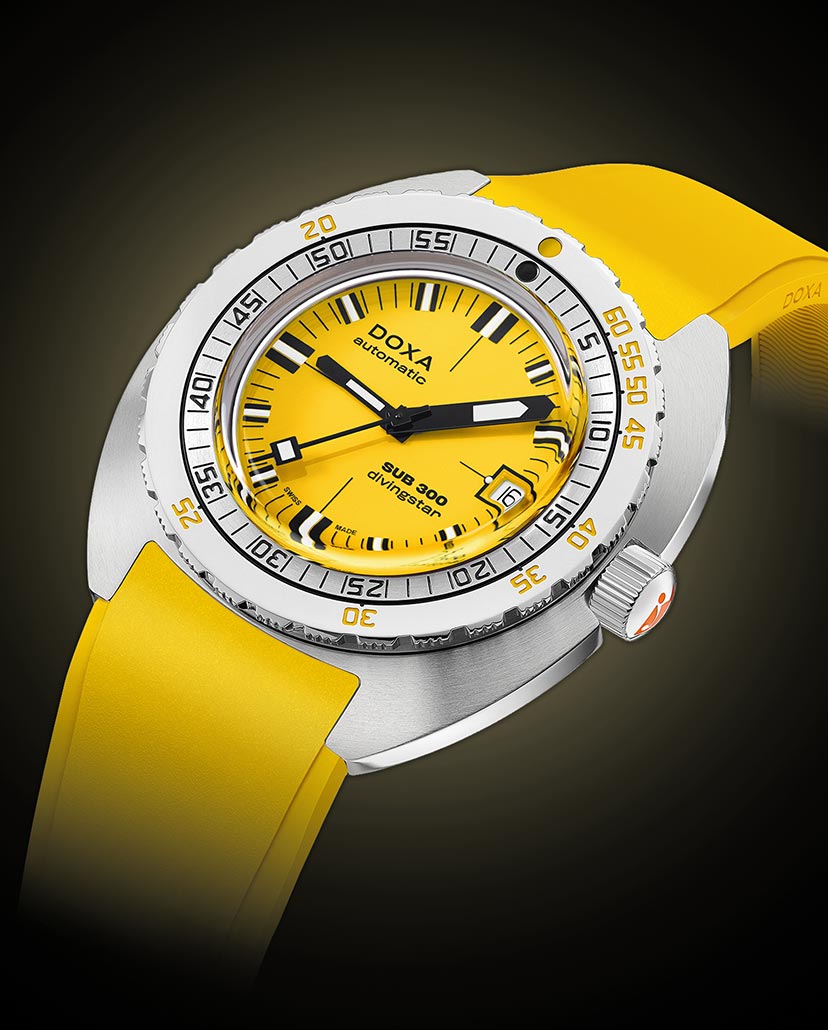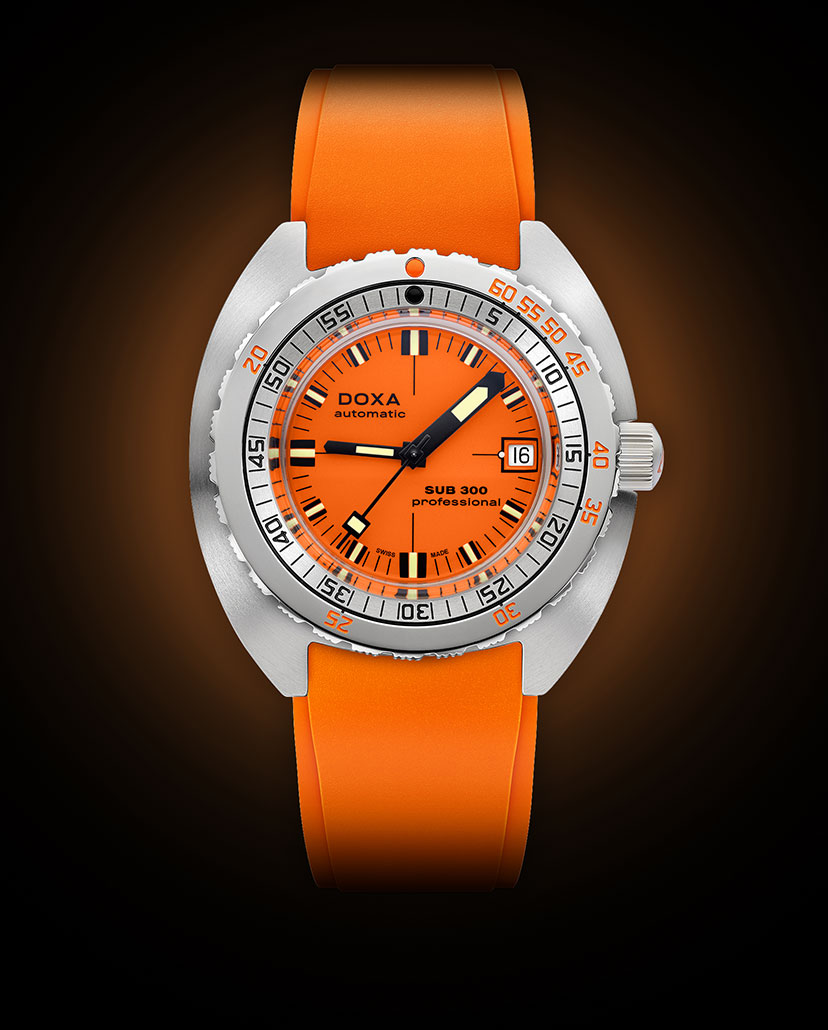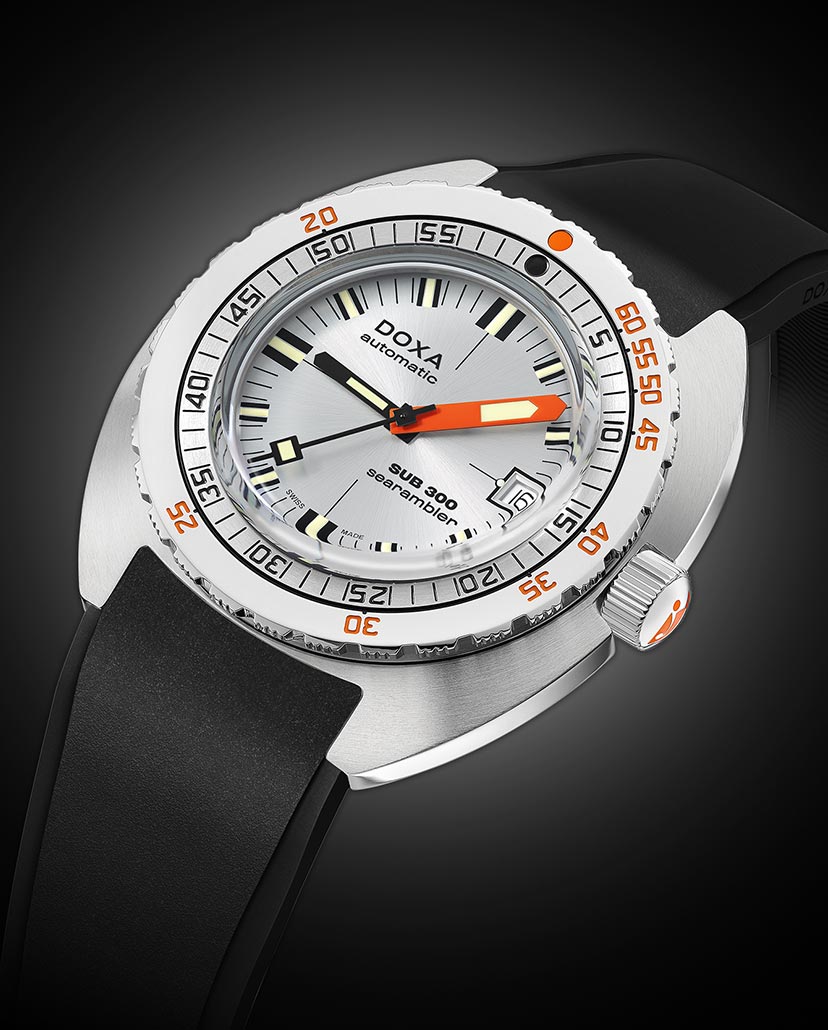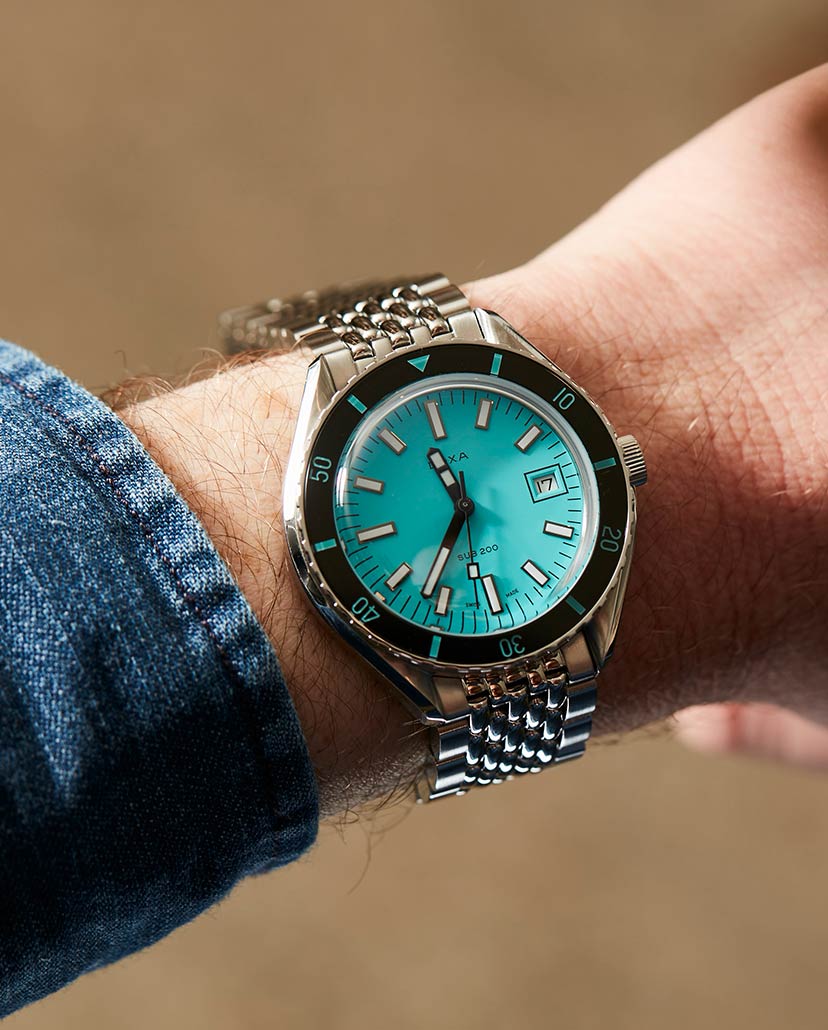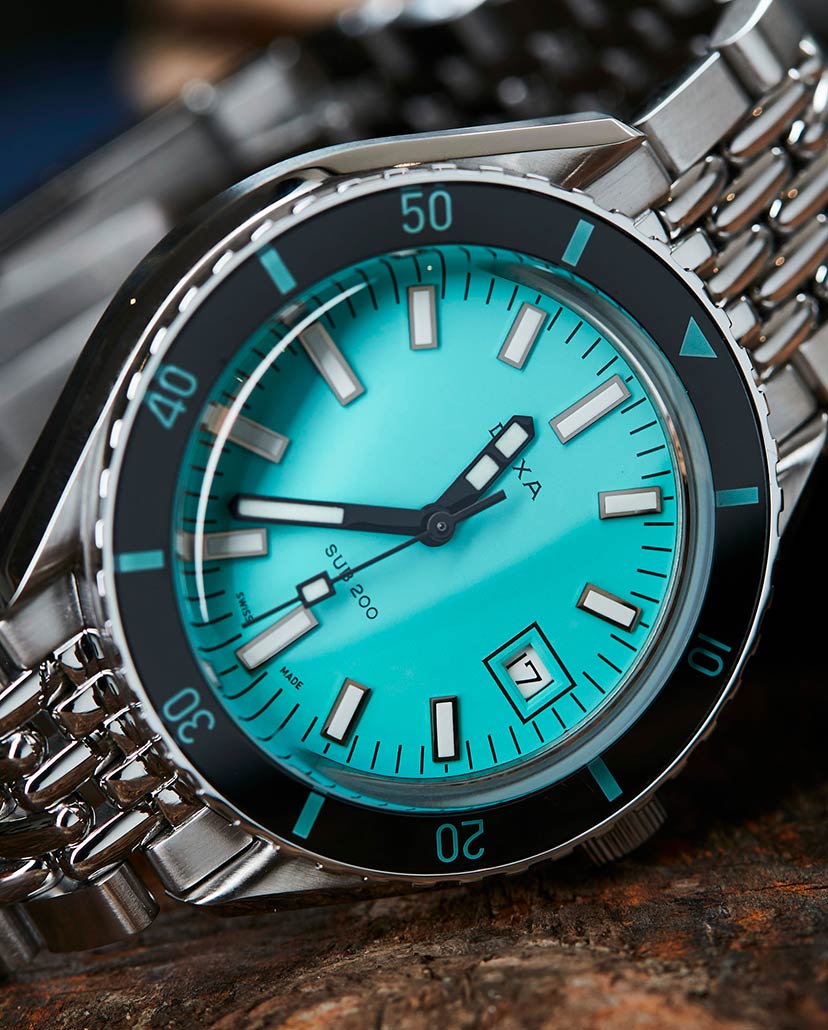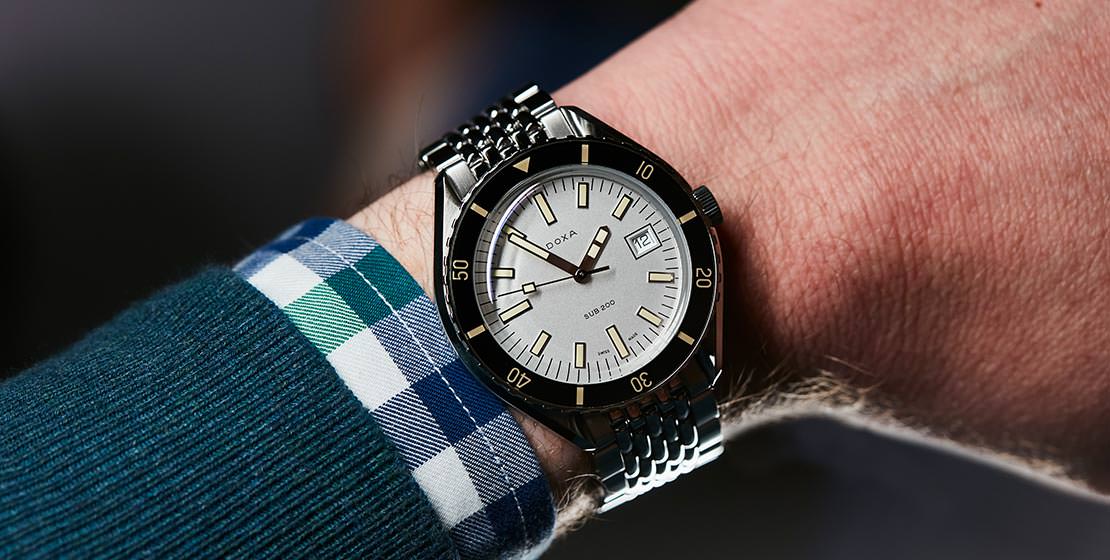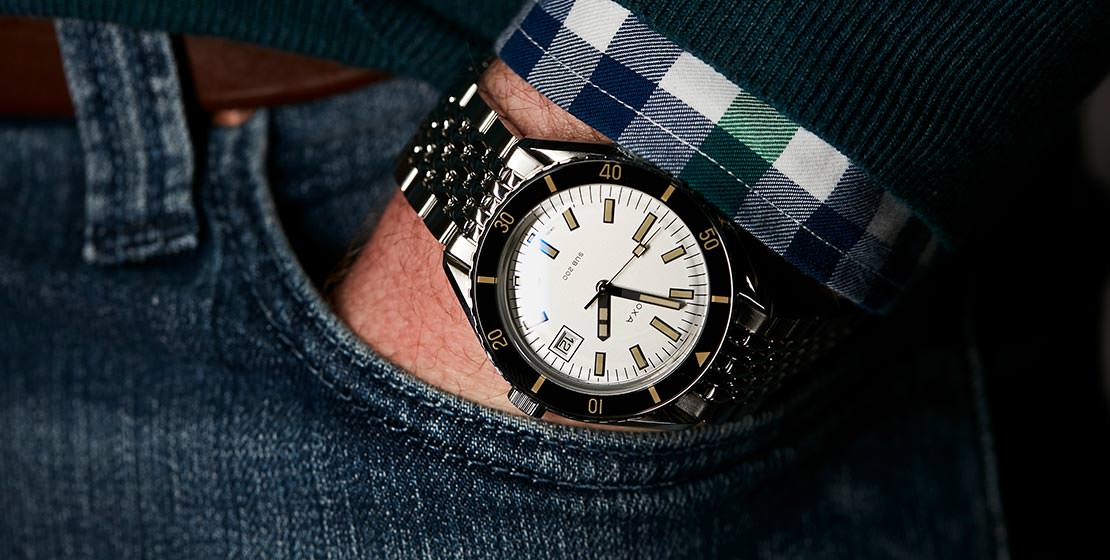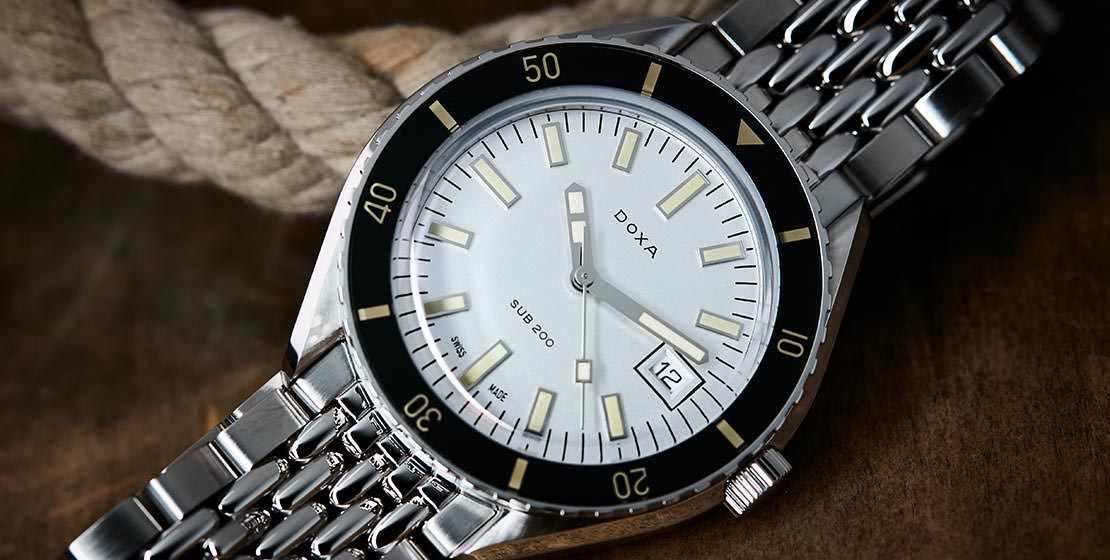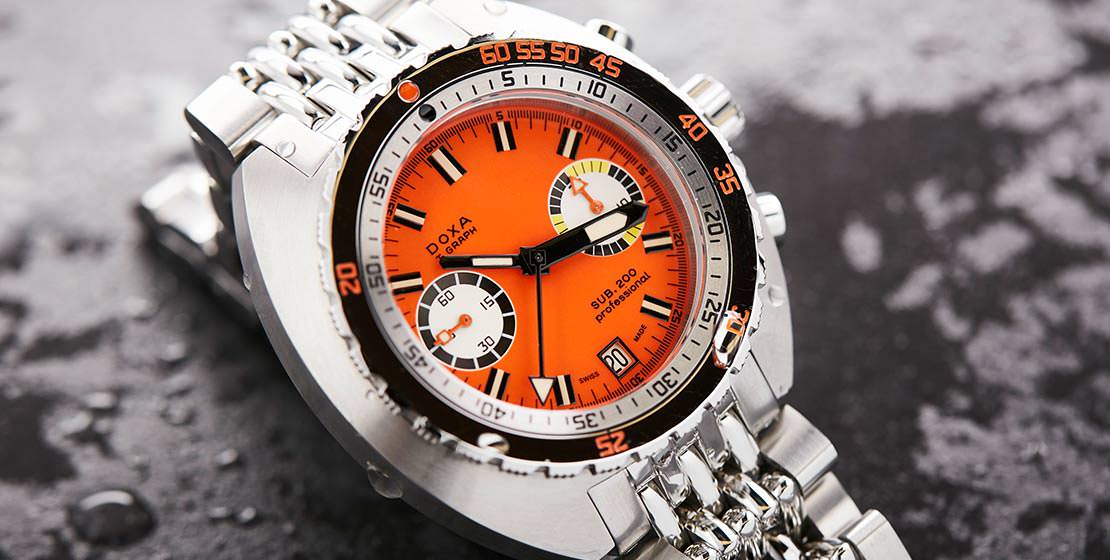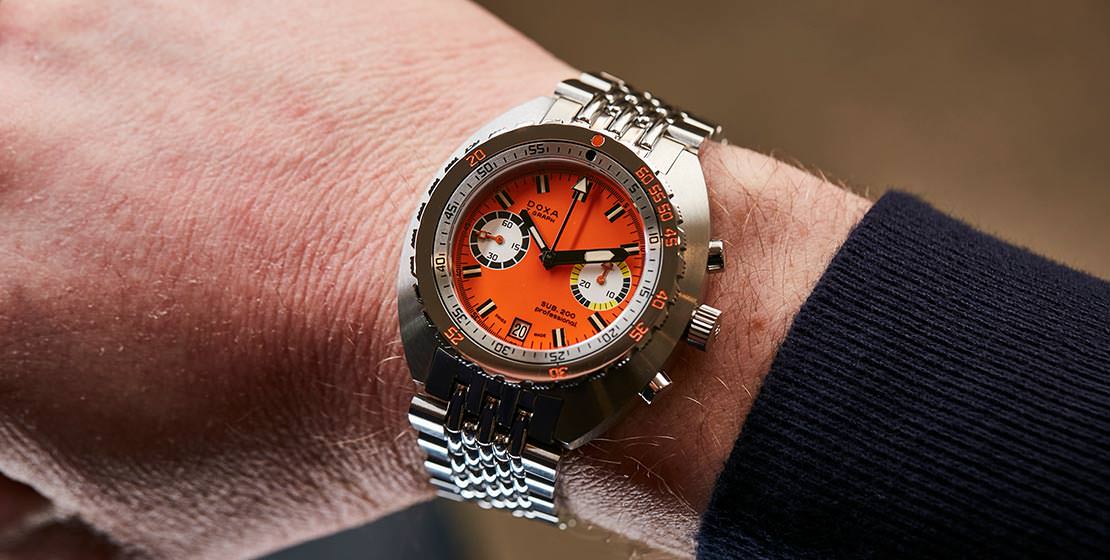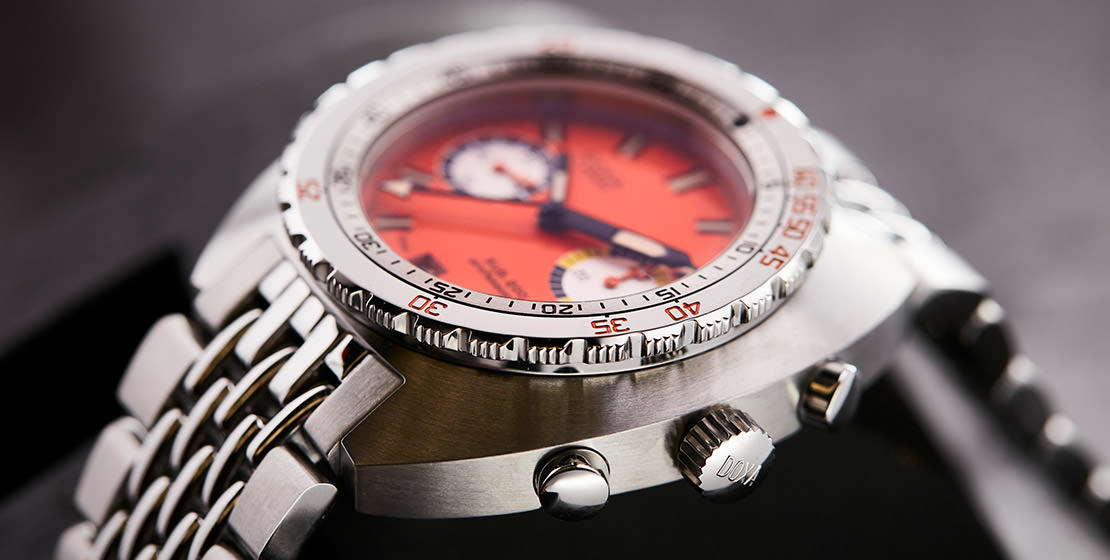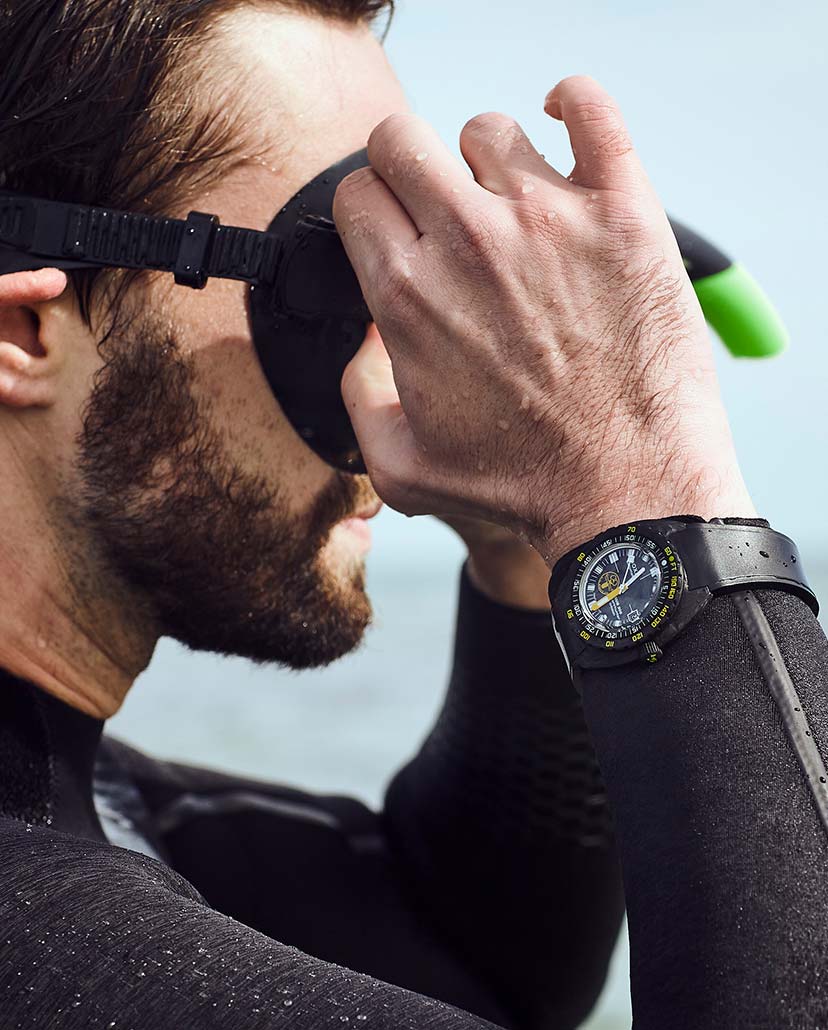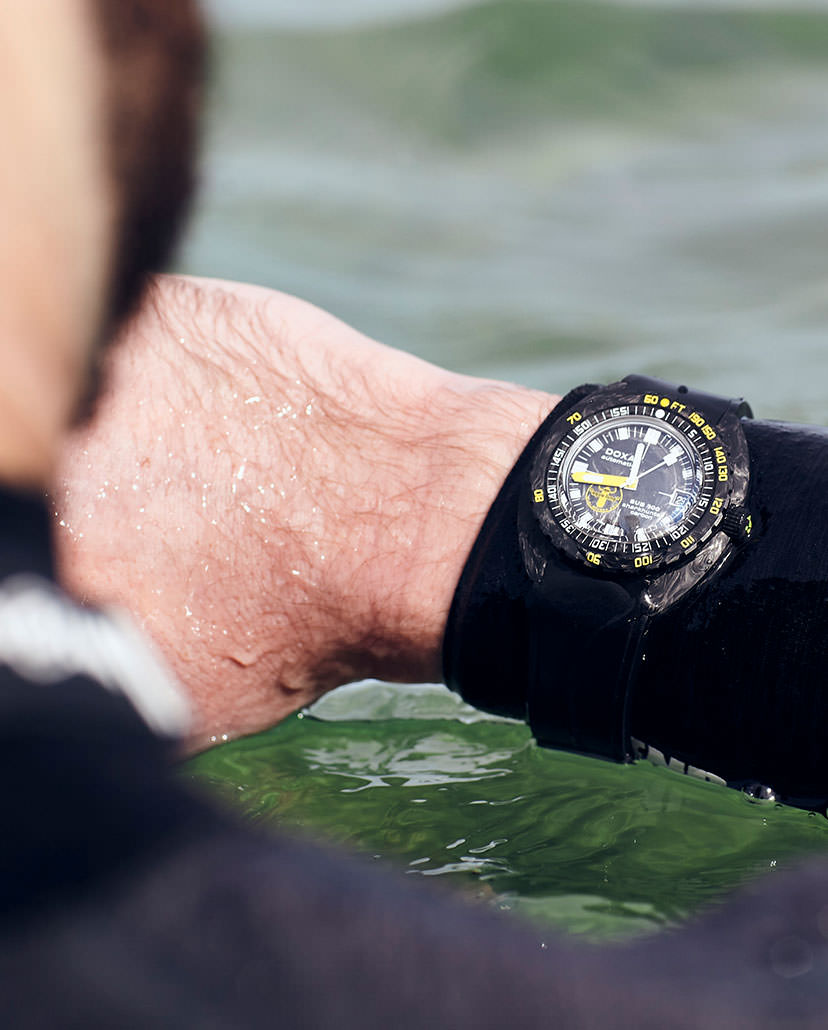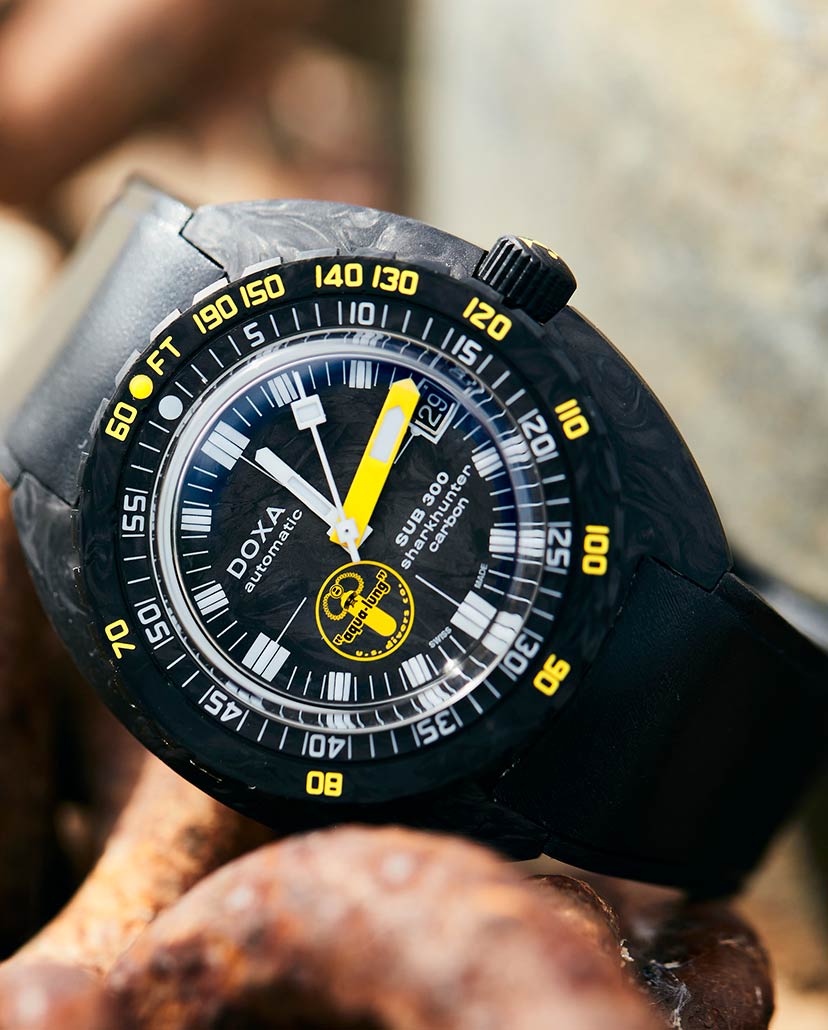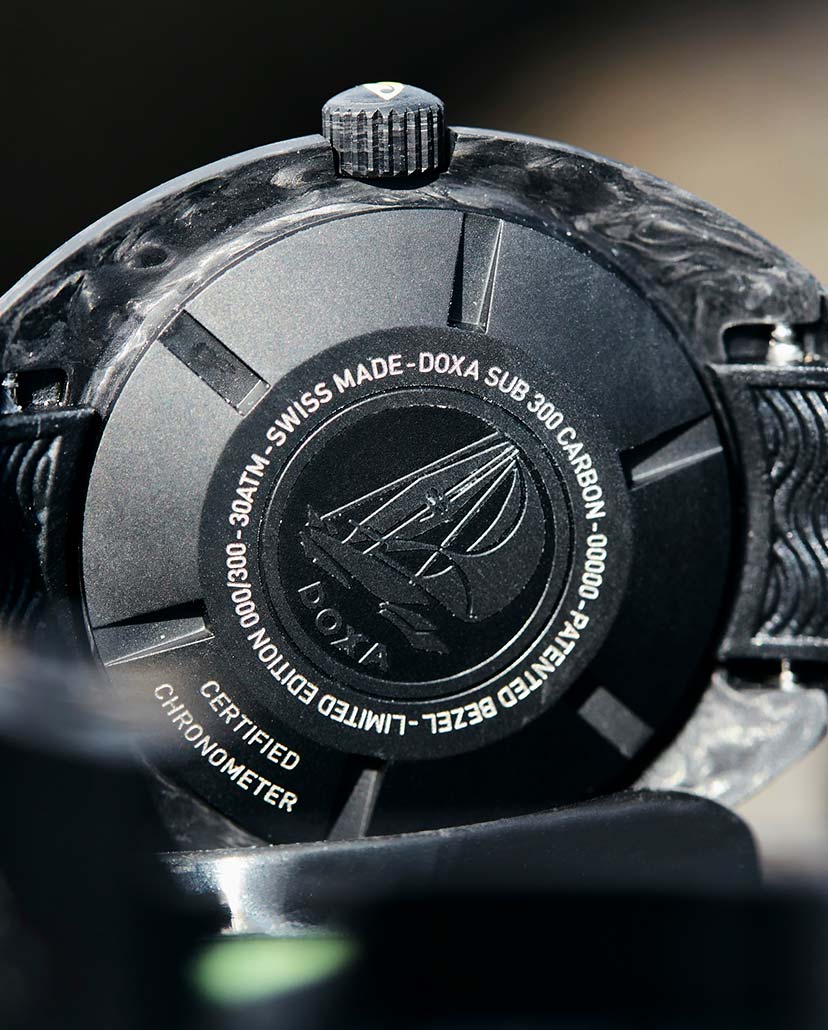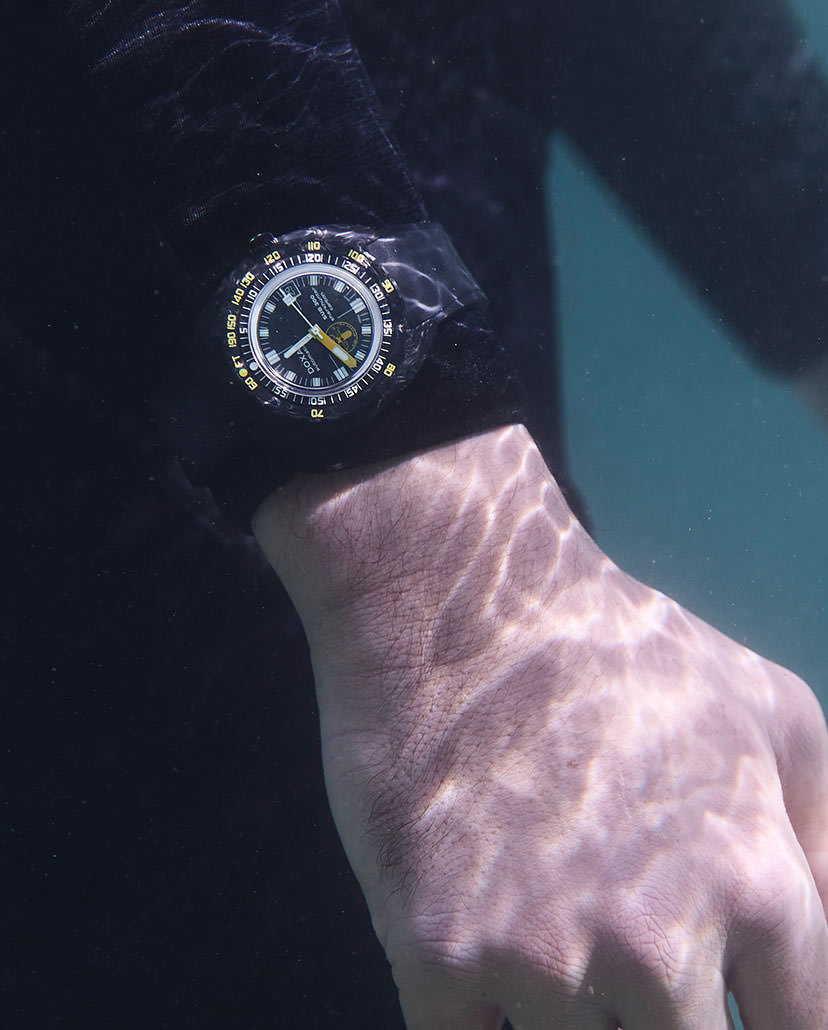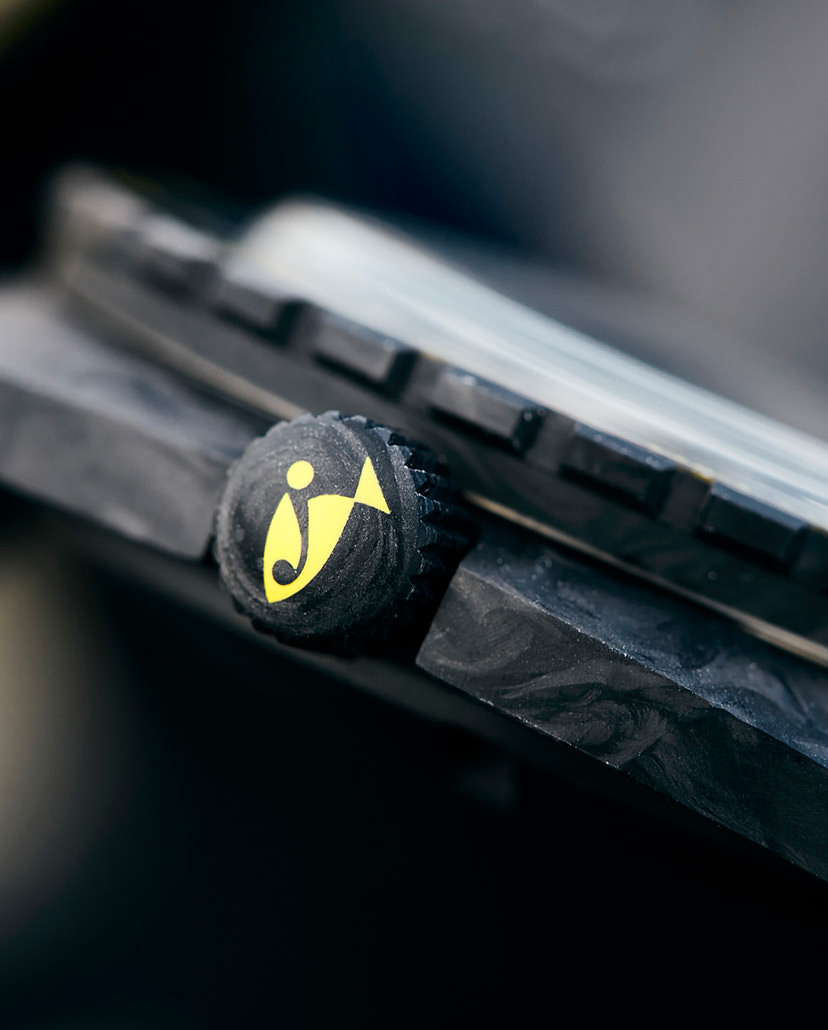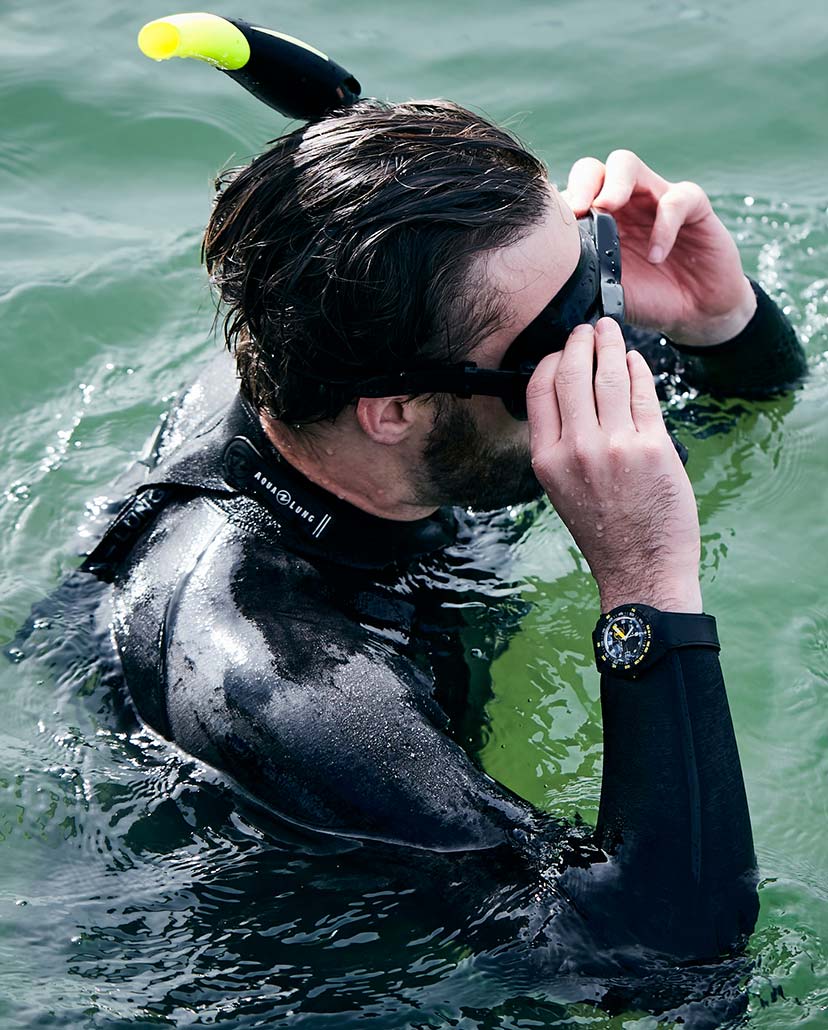FeatureWhat Lies Beneath—Introducing Doxa And Its Iconic Dive Timers
From being a brand that made waves with their diver’s watches back in the 1960s to being almost lost to the quartz crisis; Doxa have plummeted to the depths and ascended in a new avatar with their SUB collection. We look at how the brand have kept afloat as they now enter the Indian luxury watch market
May We Recommend
Back in 1967, a diver’s watch with an orange dial generated quite a buzz in the timekeeping world. After all, it was the first time this hue was introduced in the segment that hadn’t strayed too far away from black or white dials, which provided optimum legibility underwater. But Doxa were out to change that with the SUB 300—a revolutionary concept considered a ‘truly purpose-designed’ diver’s watch that was also commercially accessible to the public. Water resistant to 300m—a feat not many recreational diver’s watches boasted, back then was another highlight. And, the fact that it was developed in consultation with the legendary French conservationist and diver, Jacques-Yves Cousteau, made it exceptional. But the show stealer was the unidirectional rotating bezel that allowed the diver to calculate and monitor no-decompression dive times based on the official US Navy dive tables. This was the first time any brand introduced such a depth gauge, and the mechanism was patented later on. It allowed the diver to quickly and precisely calculate the maximum time to be spent at a specific depth without requiring decompression stops on the way back to the surface.

So, why is this important? “When you dive using compressed air to breathe, the body equalises it with the pressure underwater. When you ascend back to the surface, your body needs to gradually adjust again as the pressure changes. That’s what is meant by decompression. The US Navy developed a table through which divers could calculate how much time they could spend at a specific depth, and safely return to the surface, decompressing during a gradual ascent,” explains CEO Jan Edöcs. He further elaborates, “If you want to dive down to 18m, you can stay up to 50 minutes before having to return to the surface in one gradual ascent. If you stay longer than that, you have to make decompression stops on the way back up. If you plan to go down to 30m, for instance, the maximum time for a no-decompression dive is 25 minutes. Doxa’s dive bezel is used in conjunction with a table that indicates the no-decompression limit for each depth. You set the zero mark opposite the minute hand, and as time passes, the dive time is shown on the bezel. This depth gauge ensures maximum accuracy and makes for a safe dive.”
But before we dive deeper into Doxa’s mastery of diver’s watches, let’s delve into its history to get an understanding of its ethos.
The Inception
Established in 1889 by watchmaker Georges Ducommun, Doxa means ‘glory’ in Greek. Perhaps that’s what the 21-year-old Ducommun was going for right when he started his business. And he managed to take the brand to a level where it achieved tremendous watchmaking fame. Known for his diligence and ingenuity, Ducommun designed a pocket watch, which was honoured at the Exposition Universelle et Internationale, Belgium in 1905, and a year later, his anti-magnetic timekeeper won the gold at the World’s Fair in Milan, Italy. But Ducommun did not rest on his laurels. He kept innovating, and soon developed the Doxa eight-day calibre, which was patented in 1908. With this he ventured into the automobile world, which was also undergoing tremendous modernisation during the early 20th century; thanks to new mass-production principles, which enabled increase in volumes. This robust eight-day calibre was used in the dashboard clocks of Bugatti’s racing cars, and was extremely accurate when it came to timing endurance races. It was also used on ships and airplanes since its impressive power reserve made it an ideal timekeeper for the long haul. However, no matter how complicated the movement, Doxa’s focus was always on providing high-quality watches at affordable prices. The company realised early on that to stay relevant in the watchmaking business, one needs to adapt and evolve with the changing times. They even offered personalisation of cases with inscriptions of hunting scenes, cars, horses and other such motifs.
After Ducommun’s death in 1936, his son-in-law Jacques Nardin (grandson of Ulysse Nardin, founder of the eponymous brand), took up the reins. While the focus remained on travel and sports timepieces, the brand also experimented with creating alarm wristwatches, ring-watches and instrument watches with functions such as a date-pointer and a jumping seconds hand.
‘Orange Mania’ 1967: The SUB Makes A Splash
In 1957, Doxa launched their Grafic dress watch collection based on the Bauhaus (a German school of art) principles of design. The simple, clean dial in a square case was the epitome of symmetry. It had lines radiating from the centre, where the hands are mounted, to give the impression of a sophisticated compass, following the North. This was when the company was still making classic timepieces before they took the plunge into the dive watches segment, and a decade later launched the SUB 300—an orange-coloured dive timer developed along with the legendary aquanaut Jacques-Yves Cousteau. With the patented unidirectional-rotating bezel that allowed the wearer to calculate no-decompression dive times, this radical innovation made it the benchmark for military and professional divers. So what was the orange dial’s significance for the brand? Edöcs explains, “The idea came from the engineers who were carrying out tests in Lake Neuchâtel in Switzerland, and it was the colour orange that continued to offer optimal legibility even at 30m. Also, going with orange was rather daring at the time, because all the other diver’s watch dials were black, silver or white.”
And in 1969, they took it up a notch, and introduced the SUB 300T Conquistador—the first diver’s watch for the general public equipped with a helium release valve (HRV). This was in addition to the existing patented unidirectional-rotating bezel and the signature orange dial. Helium is widely used in oxygen tanks in diving equipment, instead of nitrogen that occurs in the natural air we breathe, because of helium’s properties being more favourable under the extreme pressure at diving depths. Helium molecules are tiny, and are able to pass through the watertight seals of a timepiece, more so under extreme pressure when in the deep. A helium release valve automatically releases the accumulated helium molecules, thus restoring the watch back to sea-level pressure. This collection was reinterpreted in 2019 and introduced as the SUB 300T in a choice of six colours (as for all the latest SUB models). Each colour variant has been given its own name. Orange is named Professional, yellow is called Divingstar, navy blue is Caribbean, while turquoise is aptly titled Aquamarine. The more neutral silver and black are called Searambler and Sharkhunter, respectively.
“The prominent indices and oversized minute hand with beige-coloured Super-LumiNova inlays, enable the most important information to be readily registered by the diver, even under extremely low-light conditions. Incorporating the aesthetics that defined the original SUB 300T Conquistador; the technical aspects make it an authentic true-to-purpose, reliable and desirable diving watch, even today. It’s currently our best-selling model,” says CEO Edöcs.
However, the success of the SUB 300 was overshadowed by the quartz crisis of the 1970s, which forced mechanical watchmaking to run its course. This posed several challenges for the brand, which shut down its operations in 1980. Though a few years later, Doxa rose like a phoenix from the ashes, when Swiss-based Jenny Watches acquired the company in 1997. The headquarters were then shifted to Bienne, Switzerland, and ever since, the brand have been focusing on manufacturing and promoting their iconic relaunched SUB diver’s watches. Last year, Doxa made inroads into the Indian market after the positive response received in the US, UK, Australia and Europe.
And Edöcs is hopeful. “We are passionate and want to deliver high-performance watches to our customers, while ensuring the best quality-vs-price ratio on the market. We are really happy to work with Ethos Watches—the country’s leading agent for high-end Swiss watch brands. I’m sure that the Doxa ethos, the spirit behind our watchmaking and the design will resonate with the Indian consumer,” he says.

Doxa In The 21st Century
A pertinent issue often discussed in watch forums and collectors’ groups revolves around the relevance of a diver’s watch in today’s world. If one gets down to the nitty-gritty, then a simple explanation should suffice: technology has given rise to dive computers, which are far more advanced when it comes to tracking the amount of time spent underwater. What’s more? They are easier to use and provide real-time dive information that one needs before taking the plunge. So, what’s it about these pieces that have watch lovers swooning over them and perhaps, on many occasions, even opting for a diver’s watch for daily wear over a regular three-hand mechanical? After all, it does exactly the same thing—that is, tell time—except that a diver’s watch does much more, and is highly coveted for the vintage charm that it offers the wearer. Doxa, too, have played up the nostalgia of yesteryears when diver’s watches had gained immense popularity in the 60s as diving was introduced to the general public as a recreational activity.
Today, it’s a known face in the world of dive watches, especially with the SUB collection, which stands out with its unidirectional bezel with two rings and the no-decompression dive table based on the US Navy’s decompression dive chart. The bezel rotates once with 120 clicks. The outer ring shows the dive depth in feet, while the inner bezel circle has the corresponding time to the outer ring’s depth rate. So, if the diver wants to go down a 100ft, on the bezel you’ll see the corresponding time as 25 minutes. At the beginning of the descent, the diver rotates the bezel’s luminous dot marker to the minute hand. This way if the diver goes a 100ft deep, they can track the time left of those 25 minutes. When the minute hand reaches 25, the diver knows that they need to start their ascent. Another feature of this watch is the difference in the size of the hands. The minute hand is much larger than the hour hand. This helps the user to follow the elapsed time more closely, even under extreme dark conditions. Currently, Doxa manufactures more than 15,000 watches per year. Here’s a look at some the various series under SUB repertoire.
Doxa SUB 200
Available in six vibrant colours and rubber straps to matches their corresponding dials, the SUB 200 watches are crafted in stainless steel. With a case measuring 42mm, these models initially came with a ‘beads of rice’ bracelet, also in stainless steel, with a folding clasp and the brand’s signature fish emblem. This heritage bracelet remains available as well. Distinctive features of this series are: baton-type hands, applied hour-markers and bezel indications with Super-LumiNova. Topped with sapphire crystal that has the characteristic curve of the Plexiglas used in the early days, and water-resistant to a depth of 200m, the SUB 200 sports a simple stainless steel unidirectional rotating bezel, and is powered by an ETA automatic mechanical calibre.
Doxa SUB 200 T.Graph
Taking cues from the 1969 original, Doxa have introduced a limited-edition series of the SUB 200 T.Graph in stainless steel. The collection consists of 300 pieces, crafted in robust 43mm cases. The watches are equipped with scratch-resistant sapphire crystal with an anti-reflective coating. In addition to being water-resistant to 200m, the watch also features the patented unidirectional-rotating bezel with the dual indication of dive time in minutes and depth in meters to calculate the dive time without decompression stops. Just like the original model, the dial is finished in semi-matte orange, and features two counters, one at nine o’clock indicating the seconds, and the other at three o’clock indicating the chronograph’s 30 minutes. The baton-type hands and the insert on the chronograph’s seconds hand are all filled with beige Super-LumiNova. The black painted indices, too, are luminous so as to provide maximum legibility underwater. The timepieces are equipped with Valjoux manual-winding movements that can function for up to 45 hours when fully wound.
Doxa SUB 300 Carbon Aqua Lung Sharkhunter
The SUB 300 and 300T models from the 60s laid the foundation for Doxa’s current dive watches. Bridging the past and future, the new SUB 300 Aqua Lung Sharkhunter pushes the envelope and marks a first with a forged carbon case and black rubber strap. It is part of the SUB 300 line—the first truly 100-percent purpose-designed, professional-grade diver’s watch available to the general public. This was followed by a series of acclaimed editions such as Black Lung, Silver Lung and Poseidon. And last year, the brand partnered with Aqua Lung—an American company that manufactures diving and snorkelling equipment—to launch a limited-edition series of 300 timepieces powered by a COSC-certified calibre. The watch measures 42.5mm and is topped with the quintessential patented Doxa unidirectional-rotating bezel, also executed in forged carbon. It features the US Navy no-decompression dive table with depth indication in yellow and time graduation in white.
Doxa SUB 1500T
True to Doxa’s pioneering spirit, the SUB 1500T breaks new ground with a cushion-shaped stainless steel case that’s water-resistant to 1,500m. It features the iconic unidirectional bezel with the diving table and a helium release valve, which was introduced in the iconic 1969 SUB 300T Conquistador—the first diver’s watch for the general public. The watch comes in a generous 45mm case with a slightly domed glass and can seamlessly function for at least 42 hours. The Doxa SUB 1500T is also available in a choice of six dial colours with either a matching rubber strap, or a steel ‘beads of rice’ bracelet.


